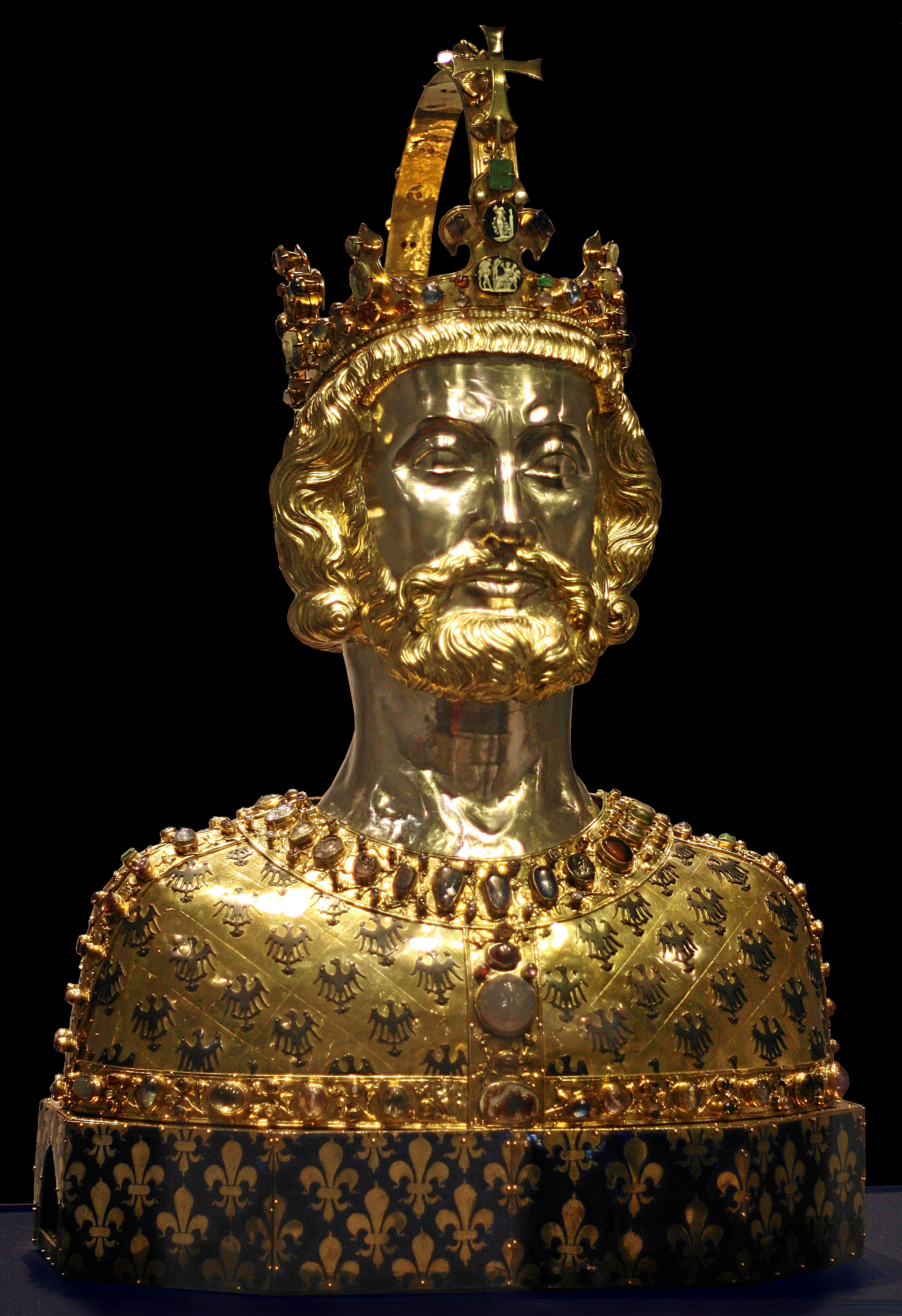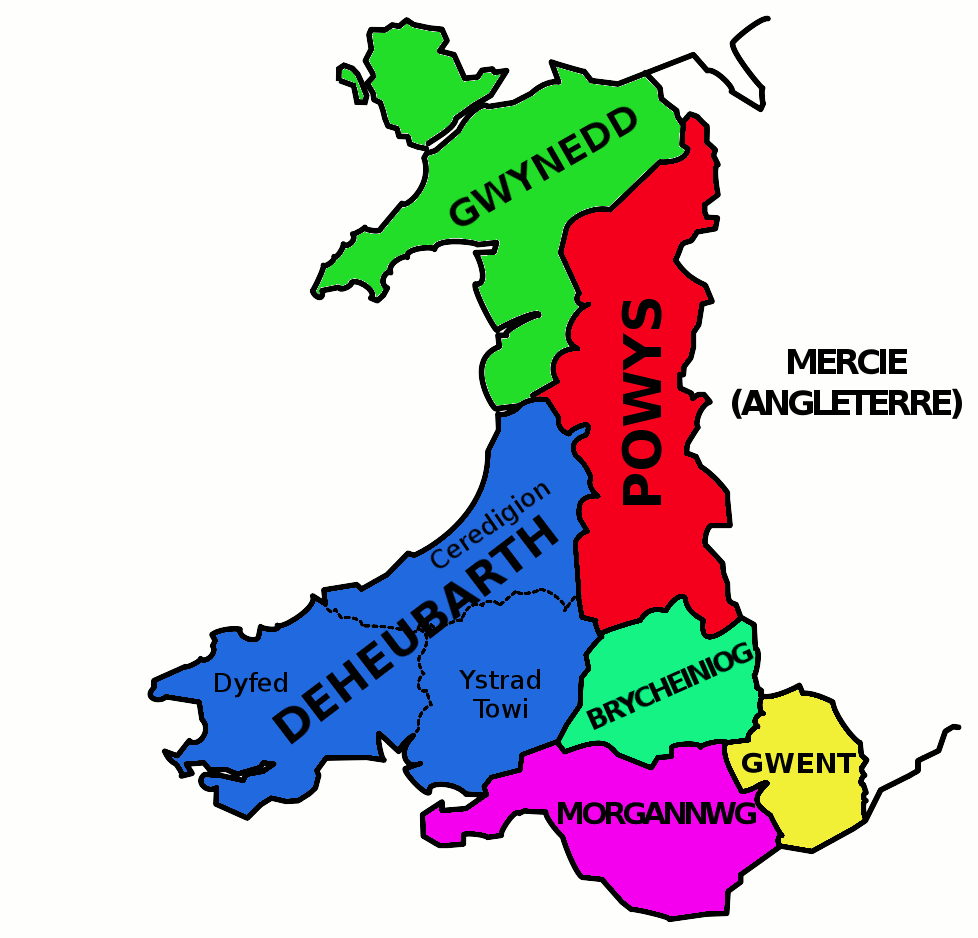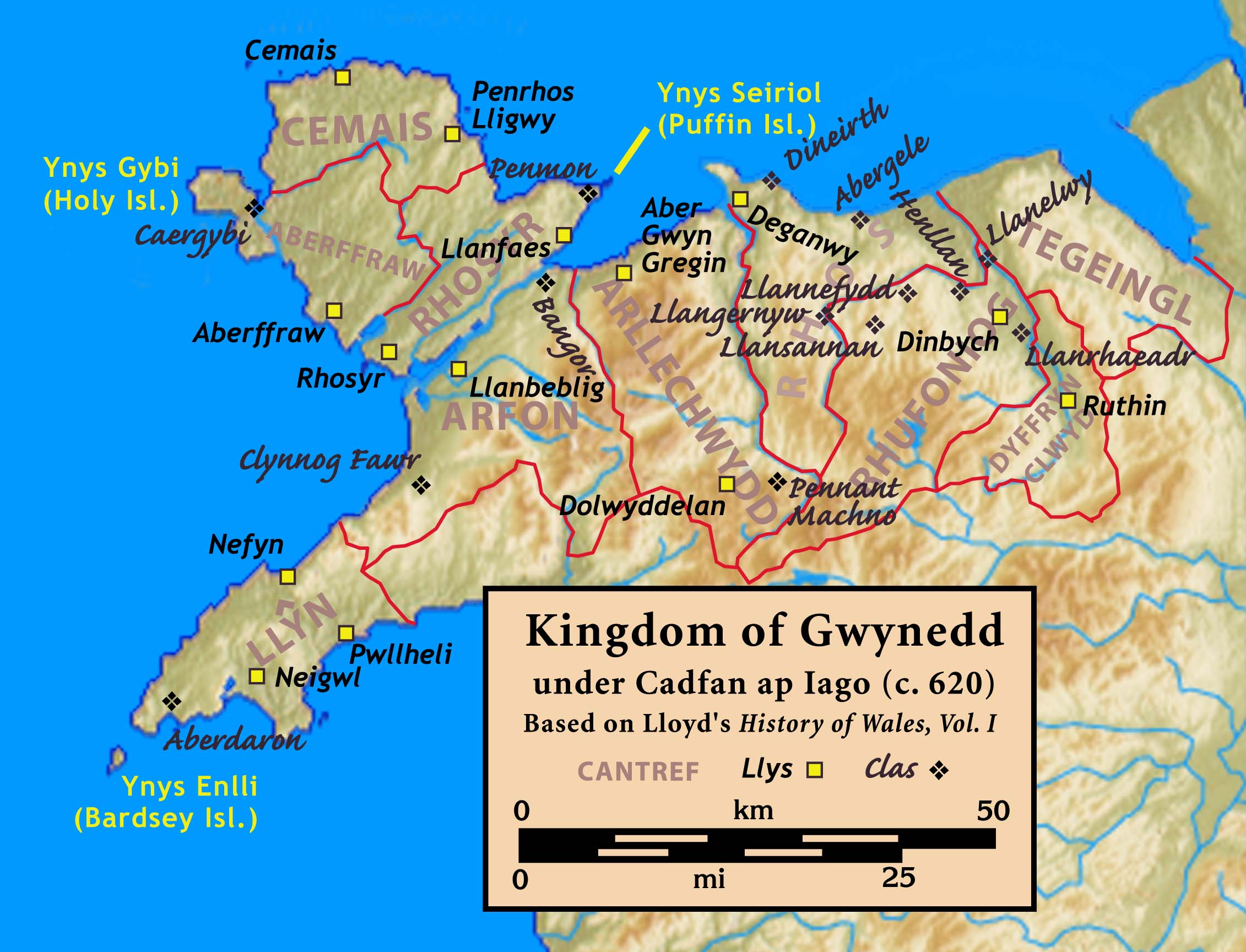|
Cadell Ap Rhodri
Cadell ap Rhodri (854–909) was King of Seisyllwg, a minor kingdom in southwestern Wales, from about 872 until his death. Life Cadell was the second son of King Rhodri the Great of Gwynedd and Angharad, a princess from Seisyllwg. In 872 Angharad's brother Gwgon, King of Seisyllwg, drowned without leaving an heir. Rhodri became steward over the kingdom, and while he was unable to make a legal claim to the throne, he was able to install Cadell as king. He passed it to his son, Hywel Dda, at his death in 909. Cadell and Hywel together also conquered Dyfed in 904905, establishing Hywel as the king in that region. After his father's death, Hywel ruled the kingdoms jointly as Deheubarth. Cadell had two other sons, Morgan and Cadwgan. See also * Kings of Wales family trees Footnotes ReferencesA history of Wales from the earliest time John Edward Lloyd Sir John Edward Lloyd (5 May 1861 – 20 June 1947) was a Welsh historian, He was the author of the first serious hist ... [...More Info...] [...Related Items...] OR: [Wikipedia] [Google] [Baidu] |
King
King is the title given to a male monarch in a variety of contexts. The female equivalent is queen, which title is also given to the consort of a king. *In the context of prehistory, antiquity and contemporary indigenous peoples, the title may refer to tribal kingship. Germanic kingship is cognate with Indo-European traditions of tribal rulership (c.f. Indic '' rājan'', Gothic '' reiks'', and Old Irish '' rí'', etc.). *In the context of classical antiquity, king may translate in Latin as '' rex'' and in Greek as ''archon'' or ''basileus''. *In classical European feudalism, the title of ''king'' as the ruler of a ''kingdom'' is understood to be the highest rank in the feudal order, potentially subject, at least nominally, only to an emperor (harking back to the client kings of the Roman Republic and Roman Empire). *In a modern context, the title may refer to the ruler of one of a number of modern monarchies (either absolute or constitutional). The title of ''king ... [...More Info...] [...Related Items...] OR: [Wikipedia] [Google] [Baidu] |
Deheubarth
Deheubarth (; lit. "Right-hand Part", thus "the South") was a regional name for the realms of south Wales, particularly as opposed to Gwynedd (Latin: ''Venedotia''). It is now used as a shorthand for the various realms united under the House of Dinefwr, but that Deheubarth itself was not considered a proper kingdom on the model of Gwynedd, Powys, or Dyfed is shown by its rendering in Latin as ''dextralis pars'' or as ''Britonnes dexterales'' ("the Southern Britons") and not as a named land. In the oldest British writers, ''Deheubarth'' was used for ''all'' of modern Wales to distinguish it from ''Hen Ogledd'' ('' Y Gogledd''), the northern lands whence Cunedda and the Cymry originated. History Deheubarth was united around 920 by Hywel Dda out of the territories of Seisyllwg and Dyfed, which had come into his possession. Later on, the Kingdom of Brycheiniog was also added. Caerleon was previously the principal court of the area, but Hywel's dynasty fortified and built up a ... [...More Info...] [...Related Items...] OR: [Wikipedia] [Google] [Baidu] |
10th-century Welsh Monarchs
1 (one, unit, unity) is a number representing a single or the only entity. 1 is also a numerical digit and represents a single unit of counting or measurement. For example, a line segment of ''unit length'' is a line segment of length 1. In conventions of sign where zero is considered neither positive nor negative, 1 is the first and smallest positive integer. It is also sometimes considered the first of the infinite sequence of natural numbers, followed by 2, although by other definitions 1 is the second natural number, following 0. The fundamental mathematical property of 1 is to be a multiplicative identity, meaning that any number multiplied by 1 equals the same number. Most if not all properties of 1 can be deduced from this. In advanced mathematics, a multiplicative identity is often denoted 1, even if it is not a number. 1 is by convention not considered a prime number; this was not universally accepted until the mid-20th century. Additionally, 1 is the ... [...More Info...] [...Related Items...] OR: [Wikipedia] [Google] [Baidu] |
909 Deaths
9 (nine) is the natural number following and preceding . Evolution of the Arabic digit In the beginning, various Indians wrote a digit 9 similar in shape to the modern closing question mark without the bottom dot. The Kshatrapa, Andhra and Gupta started curving the bottom vertical line coming up with a -look-alike. The Nagari continued the bottom stroke to make a circle and enclose the 3-look-alike, in much the same way that the sign @ encircles a lowercase ''a''. As time went on, the enclosing circle became bigger and its line continued beyond the circle downwards, as the 3-look-alike became smaller. Soon, all that was left of the 3-look-alike was a squiggle. The Arabs simply connected that squiggle to the downward stroke at the middle and subsequent European change was purely cosmetic. While the shape of the glyph for the digit 9 has an ascender in most modern typefaces, in typefaces with text figures the character usually has a descender, as, for example, in . The mo ... [...More Info...] [...Related Items...] OR: [Wikipedia] [Google] [Baidu] |
850s Births
{{Numberdis ...
85 may refer to: * 85 (number) * one of the years 85 BC, AD 85, 1885, 1985, 2085 See also * * M85 (other), including "Model 85" * 1985 (other) * List of highways numbered A ''list'' is any set of items in a row. List or lists may also refer to: People * List (surname) Organizations * List College, an undergraduate division of the Jewish Theological Seminary of America * SC Germania List, German rugby union ... [...More Info...] [...Related Items...] OR: [Wikipedia] [Google] [Baidu] |
List Of Rulers Of Wales
Prior to the Conquest of Wales, completed in 1282, Wales consisted of a number of independent kingdoms, the most important being Gwynedd, Powys, Deheubarth (originally Ceredigion, Seisyllwg and Dyfed) and Morgannwg (Glywysing and Gwent). Boundary changes and the equal division of patrimony meant that few princes ever came close to ruling the whole of Wales. The names of those known to have ruled over one or more of the kingdoms are listed below. The only person known to have ruled all of Wales was Gruffydd ap Llywelyn (c. 1010–1063), a prince of Gwynedd who became King of Wales from 1055 to 1063. However, the princes of the medieval period hailing largely from west Wales, mainly Gwynedd, had such significant authority that allowed them to claim authority beyond the borders of their kingdoms. This allowed many Princes to claim to rule all Wales. Rhodri Mawr has been suggested by some as the first sovereign of Wales, and the first to unite most of Wales. The modern-day territor ... [...More Info...] [...Related Items...] OR: [Wikipedia] [Google] [Baidu] |
John Edward Lloyd
Sir John Edward Lloyd (5 May 1861 – 20 June 1947) was a Welsh historian, He was the author of the first serious history of the country's formative years, ''A History of Wales from the Earliest Times to the Edwardian Conquest'' (1911). Another of his great works was ''Owain Glendower: Owain Glyn Dŵr'' (1931). For his achievements in the field, he was made a Knight Bachelor in 1934. Under his editorship, the first edition of the '' Dictionary of Welsh Biography'' was compiled, though not published until after his death (1950). Works * * - in Welsh * * * * * * * See also *Cymru Fydd The Cymru Fydd (The Wales to Come; ) movement was founded in 1886 by some of the London Welsh. Some of its main leaders included David Lloyd George (later Prime Minister), J. E. Lloyd, O. M. Edwards, T. E. Ellis (leader, MP for Merioneth, 1886– ... SourcesWelsh Biography Online External links * {{DEFAULTSORT:Lloyd, John Edward 1861 births 1947 deaths Alumni of Lincoln College, Oxf ... [...More Info...] [...Related Items...] OR: [Wikipedia] [Google] [Baidu] |
Kings Of Wales Family Trees
{{Family trees ...
Family trees of the kings of Gwynedd, Deheubarth and Powys and some of their more prominent relatives and heirs. The early generations of these genealogies are traditional and their historical accuracy is debated by scholars. Wales, monarchs of Wales Wales ( cy, Cymru ) is a Countries of the United Kingdom, country that is part of the United Kingdom. It is bordered by England to the Wales–England border, east, the Irish Sea to the north and west, the Celtic Sea to the south west and the ... [...More Info...] [...Related Items...] OR: [Wikipedia] [Google] [Baidu] |
Dyfed
Dyfed () is a preserved county in southwestern Wales. It is a mostly rural area with a coastline on the Irish Sea and the Bristol Channel. Between 1974 and 1996, Dyfed was also the name of the area's county council and the name remains in use for certain ceremonial and other purposes. History Dyfed is a preserved county of Wales. It was originally created as an administrative county council on 1 April 1974 under the terms of the Local Government Act 1972, and covered approximately the same geographic extent as the ancient Principality of Deheubarth, although excluding the Gower Peninsula and the area west of the River Tawe. The choice of the name ''Dyfed'' was based on the historic name given to the region once settled by the Irish Déisi and today known as Pembrokeshire. The historic Dyfed never included Ceredigion and only briefly included Carmarthenshire. Modern Dyfed was formed from the administrative counties which corresponded to the ancient counties of Cardiganshire ... [...More Info...] [...Related Items...] OR: [Wikipedia] [Google] [Baidu] |
Seisyllwg
Seisyllwg () was a petty kingdom of medieval Wales.Davies, p. 85 It is unclear when it emerged as a distinct unit, but according to later sources it consisted of the former Kingdom of Ceredigion plus the region known as Ystrad Tywi. Thus it covered the modern county of Ceredigion, part of Carmarthenshire, and the Gower Peninsula. It is evidently named after Seisyll ap Clydog, Seisyll, king of Ceredigion in the 7th or early 8th century, but it is unknown if he was directly responsible for its establishment. In the 10th century Seisyllwg became the centre of power for Hywel Dda, who came to rule most of Wales. In 920 Hywel merged Seisyllwg with the Kingdom of Dyfed to form the new kingdom of Deheubarth. Origins It is unclear when Seisyllwg emerged as a distinct unit. It is assumed to have been named for Seisyll ap Clydog, King of Ceredigion in the 7th or early 8th century, and as such he is traditionally regarded as its founder.Lloyd, p. 257 and note. Seisyll appears in the Harleian ... [...More Info...] [...Related Items...] OR: [Wikipedia] [Google] [Baidu] |
Gwgon
Gwgon ap Meurig (died ) was a 9th-century king of Ceredigion, king of kingdom of Ceredigion, Ceredigion and Ystrad Tywi (i.e., Seisyllwg) in southwest medieval Wales, Wales. Gwgon was the son of the former king Meurig ap Llywarch, Meurig or Morydd ap Llywarch Llwyd and inherited the realm on the death of his father. Gwgon's sister Angharad ferch Meurig, Angharad married king of Gwynedd, King Rhodri the Great of Kingdom of Gwynedd, Gwynedd. Gwgon is recorded by the Annals of Wales, annals as drowning around 871. lat-med, Gugan rex ceredigean mersus est. s:Annals of Wales A, Annals of Wales (A text). The Chronicle of the Princes places his death in the entry for 870 and says he drowned crossing the River Llychwr in Gower while fighting Viking invasions of Wales, Viking invaders.''Archaeologia Cambrensis'': "Chronicle of the Princes"p. 15 Accessed 27 Feb 2013. Contrary to Welsh law, rule was then reported to have passed to Angharad's son Cadell ap Rhodri, Cadell as a subordinate ki ... [...More Info...] [...Related Items...] OR: [Wikipedia] [Google] [Baidu] |
Kingdom Of Gwynedd
The Kingdom of Gwynedd (Medieval Latin: ; Middle Welsh: ) was a Welsh kingdom and a Roman Empire successor state that emerged in sub-Roman Britain in the 5th century during the Anglo-Saxon settlement of Britain. Based in northwest Wales, the rulers of Gwynedd repeatedly rose to dominance and were acclaimed as "King of the Britons" before losing their power in civil wars or invasions. The kingdom of Gruffydd ap Llywelynthe King of Wales from 1055 to 1063was shattered by a Saxon invasion in 1063 just prior to the Norman invasion of Wales, but the House of Aberffraw restored by Gruffudd ap Cynan slowly recovered and Llywelyn the Great of Gwynedd was able to proclaim the Principality of Wales at the Aberdyfi gathering of Welsh princes in 1216. In 1277, the Treaty of Aberconwy between Edward I of England and Llewelyn's grandson Llywelyn ap Gruffudd granted peace between the two but would also guarantee that Welsh self-rule would end upon Llewelyn's death, and so it represen ... [...More Info...] [...Related Items...] OR: [Wikipedia] [Google] [Baidu] |



.jpg)
